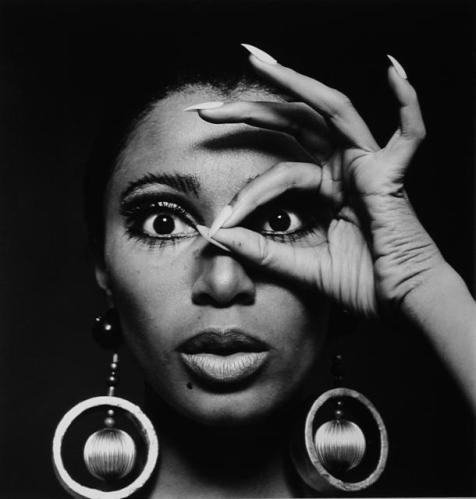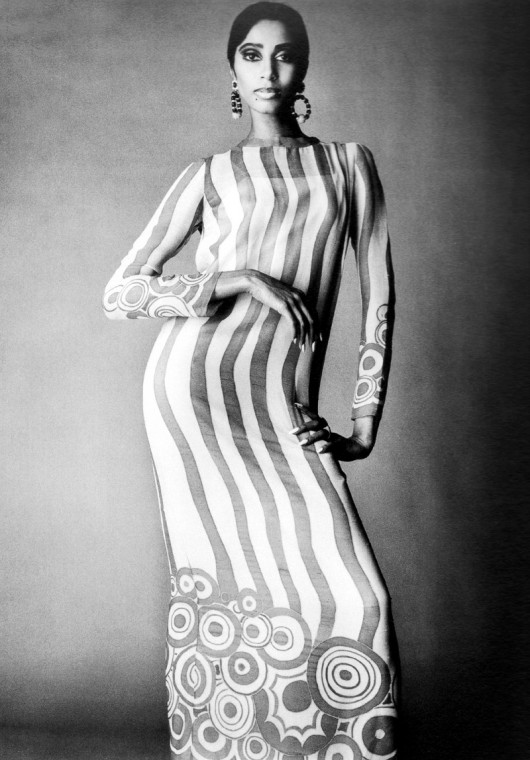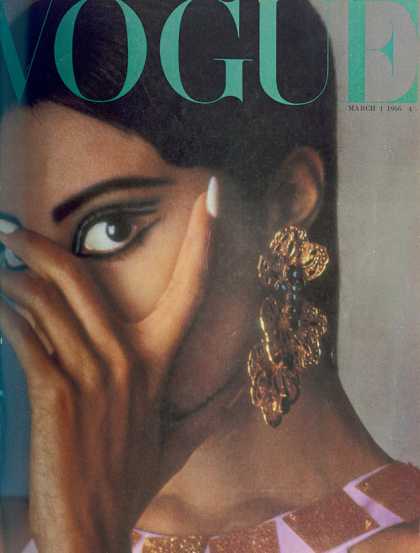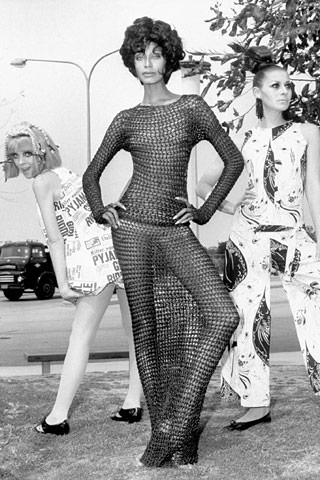

Long before Halle Berry, Jennifer Hudson, and Beyonce were covergirls, and before Naomi, Tyra, or Iman first set foot on a runway, there was Donyale Luna, the first black woman to cover Vogue and arguably the first African-American supermodel. Born Peggy Anne Freeman in 1945, the 6’2” stunner grew up in a troubled home in Detroit (her mother killed her father when she was 18), but left her past behind her once discovered by photographer David McCabe. She arrived in New York City in 1964 to much success, and was soon traveling the world, appearing in Paris Match, walking for Paco Rabanne, and appearing in several films. Of her success, she said, “Back in Detroit I wasn’t considered beautiful or anything, but here I’m different… They were looking for a new kind of model, a girl who is beautiful like you’ve never seen before.”
With long limbs, wide eyes (played up by blue or green contact lenses), and a regal stance, she attracted lots of attention. A 1966 article in Time Magazine called, “The Luna Year,” described her as, “unquestionably the hottest model in Europe at the moment. She is only 20, a Negro, hails from Detroit, and is not to be missed if one reads Harper’s Bazaar, Paris Match, Britain’s Queen, the British, French or American editions of Vogue.” Another profile of Luna underlined issues she may have had with her race. In a 1968 New York Times article, journalist Judy Stone said Donyale was, “secretive, mysterious, contradictory, evasive, mercurial, and insistent upon her multiracial lineage — exotic, chameleon strands of Indigenous-Mexican, Indonesian, Irish, and, last but least escapable, Negro.” When Stone asked her about whether her appearances in films would benefit the cause of black actresses, Luna answered, “If it brings about more jobs for Mexicans, Asians, Native Americans, Africans, groovy. It could be good, it could be bad. I couldn’t care less.”
Luna’s career continued on an upward trajectory for most of the late 60’s and early 70’s. In January 1965, a sketch of Luna appeared on the cover of Harper’s Bazaar. That same year she signed an exclusive contract with photographer Richard Avedon. In 1966, she appeared on the cover of British Vogue (she allegedly covered her nose as not to offend readers).
In 1967, Adel Rootstein fashioned a mannequin in Luna’s image. During that time she also appeared in several Andy Warhol films, starred in Italian film Salomé, portrayed a witch in Fellini’s Satyricon, and appeared in the Rolling Stones Rock and Roll circus. In 1975, she did a nude photo layout in Playboy. During this time, Luna also admitted she liked to use LSD, saying, “I think it’s great. I learned that I like to live, I like to make love, I really do love somebody, I love flowers, I love the sky, I like bright colors, I like animals. [LSD] also showed me unhappy things — that I was stubborn, selfish, unreasonable, mean, that I hurt other people.”
Drugs and unprofessional behavior eventually ended her storied career. Luna would show up late for casting calls, and sometimes wouldn’t show up at all. In a New York Times article, fellow pioneering super model Beverly Johnson said Luna, “doesn’t wear shoes winter or summer. Ask her where she’s from — Mars? She went up and down the runways on her hands and knees. She didn’t show up for bookings. She didn’t have a hard time, she made it hard for herself.”
Donyale died in Rome, Italy in 1979 at the age of 35 from a drug overdose. She left behind one daughter, Dream Cazzaniga whom she had with Italian photographer Luigi Cazzaniga.
See her in action here:
Read more about her in this 1966 Time article “Luna Year.”
*If you are in New York during New York Fashion Week, be sure to save the date for Harlem Fashion Week’s 6th annual show on Saturday, February 16th! The event goes down from 6:30-10:30pm at the Museum of the City of New York located at 1220 Fifth Avenue New York, NY 10029.





